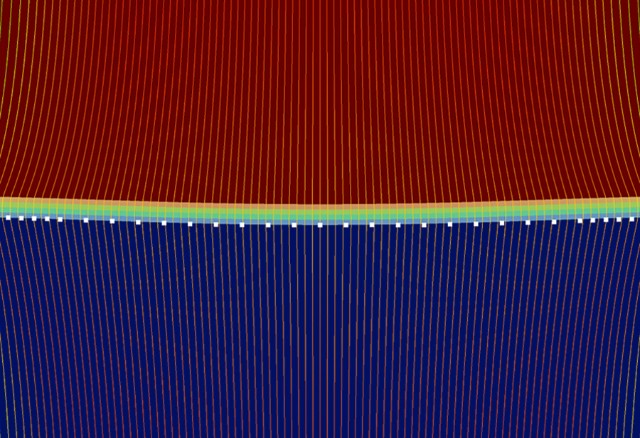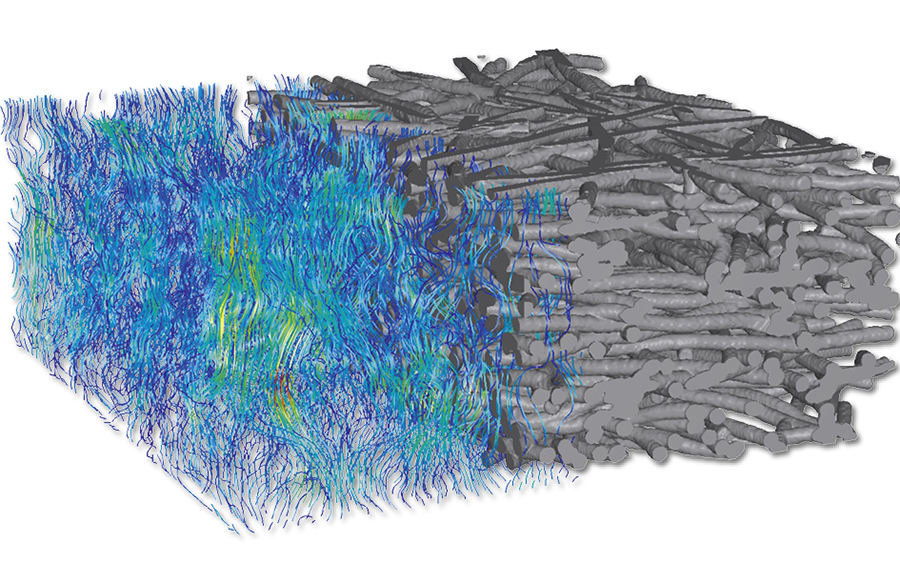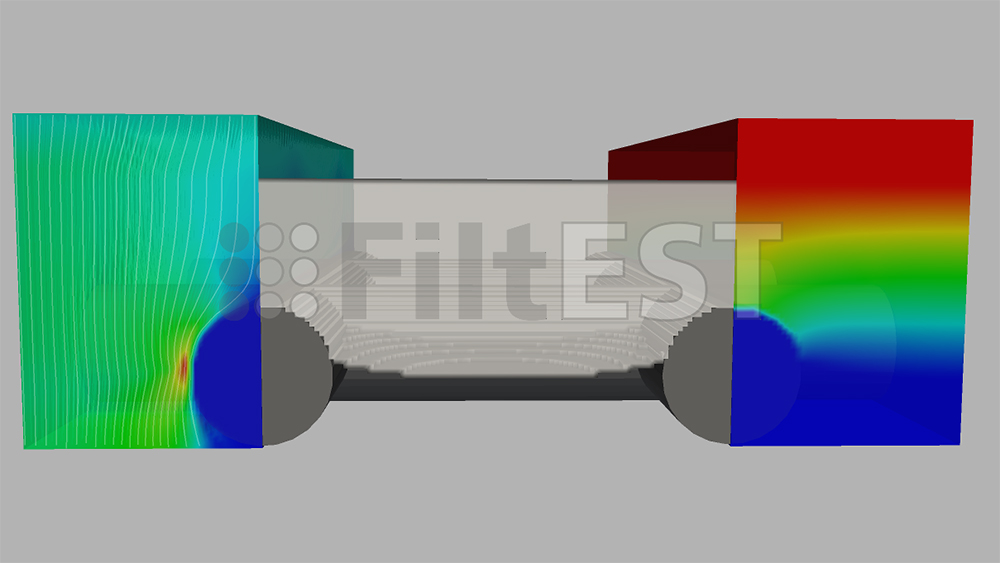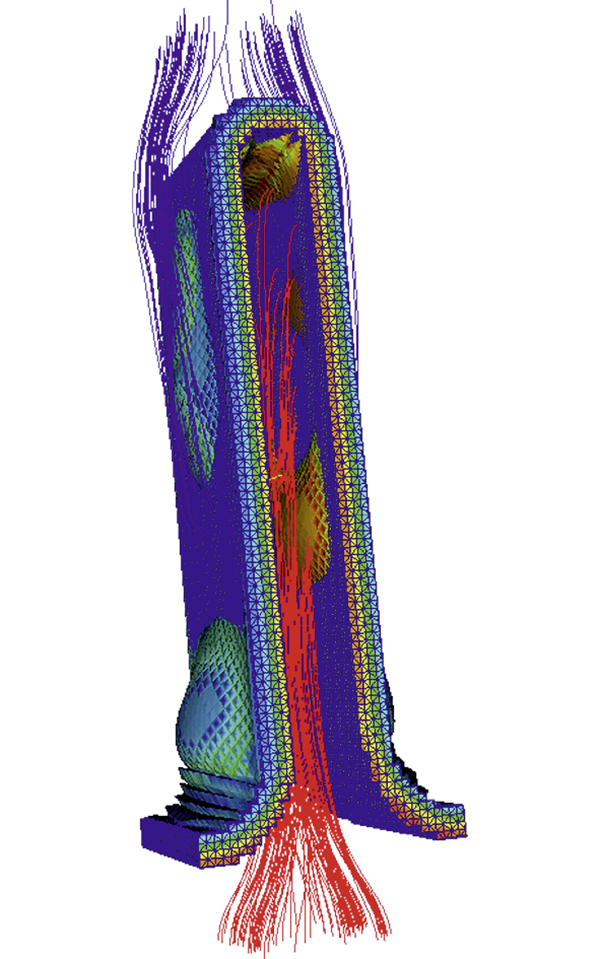Classical criteria for the assessment of the quality of a filter element’s design include lowest possible differential pressure in combination with the highest possible filtration efficiency and dirt holding capacity. In more and more filtration applications, it is seen that the mechanical properties of the filtering media and their deformation during manufacturing and operation are of increasing importance for these performance factors. For many years, a lot of research and development activities at the Department of Flow and Material Simulation at Fraunhofer ITWM have been devoted to a better understanding, appropriate modeling and numerical simulation of the deformation of filter materials and filtering media.
Modeling and Simulation of the Deformation of Filter Media
Simulation of Effects Caused by Deformations During the Manufacturing
Most filter media are combinations of several materials such as different kinds of nonwovens for prefiltering and the removal of small particles, protecting fleece layers, spacer meshes etc. During the manufacturing (e.g. pleating), the multi-layered media are mechanically loaded, causing significant (local) strains. For the nonwoven layers, the local changes in fiber volume fractions in turn lead to heterogeneities in the flow resistance and filtration efficiency.
In order to assist manufacturers of filter media and filter elements in finding optimal material combinations, layer designs (e.g. thickness of nonwoven layers) and process conditions (e.g. temperature), we offer
- experimental characterization of the mechanical properties of filter materials (cf. experimental material characteriziation)
- simulation of the deformation of nonwoven materials, effective mechanical properties of nonwovens (FeelMath)
- modeling and simulation of the flow and filtration properties of the multi-layered filter medium (FiltEST)
As a result, the derived effective properties of the multi-layered materials enable users to proceed with the upscaling in order to perform simulations of filter pleats or the entire filter element using commercial software, open-source codes or our Filter Element Simulation Toolbox (FiltEST).
Flow-induced Deformation During Operation
The deformation of filter media during operation leads to well-known and undesirable effects like pleat collapse and pleat crowding (grouping). In more and more applications, flat filtering media are affected by corresponding phenomena, too.
Filter element designers are confronted with the challenge to find a favorable way to fixate and stabilize the filtering media in the element’s housing and / or choosing an optimal pleat count. One of the major goals is to identify an optimal trade-off between low flow resistance, large filtration area and sufficient mechanical robustness of the design. In order to assist filter element designers in this difficult task, the interaction of the deformable porous / mesh with the fluid (Fluid-Porous Structure Interaction, FPSI) has to be simulated using specialized mathematical models and numerical algorithms. Achievements of previous joint research projects form the basis of scientific basis of this approach and a lot of ongoing and future developments will lead to further improvements of the simulation methods.
We offer the following services for an integrated computer-aided optimization of filter elements and / or their components:
- Variation of the geometry of filter pleats, panels, cartridges and housings based on CAD data and/or using own tools
- CFD simulation of the fluid flow through housing and filtering media
- Fluid-Porous-Structure Interaction (FPSI) simulations for advanced studies of the flow-induced deformation of the filtering media
- Stress-strain analysis of the filter element’s housing based on the fluid pressure distribution
English Video for the Deformation of Filter Media

Privacy warning
With the click on the play button an external video from www.youtube.com is loaded and started. Your data is possible transferred and stored to third party. Do not start the video if you disagree. Find more about the youtube privacy statement under the following link: https://policies.google.com/privacyFilterdeformation





